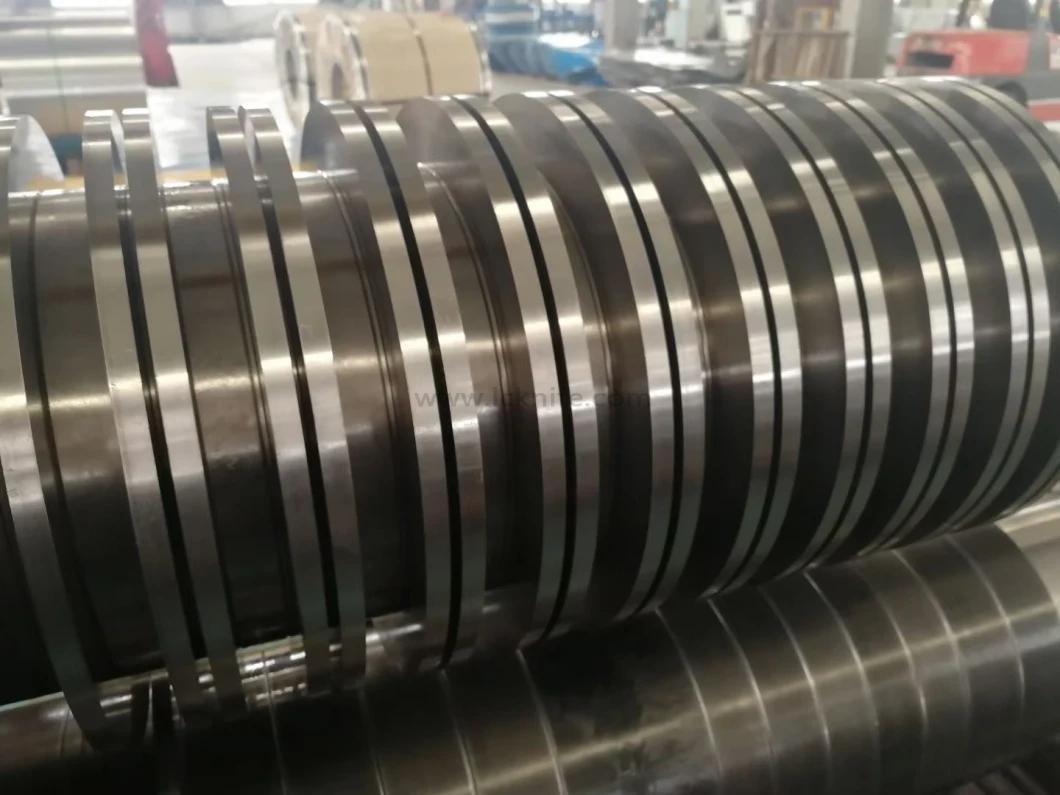광활한 재료 가공 세계에서 슬리터 나이프는 다양한 재료를 정밀하게 절단하고 슬라이싱하는 데 가장 중요한 도구입니다. 얇은 금속판, 종이, 플라스틱, 직물 등 무엇이든 슬리터 나이프는 정확하고 효율적인 처리를 보장하는 데 중요한 역할을 합니다.
슬리터 나이프는 대규모 재료 가공을 다루는 산업에 필수적인 요소입니다. 그들은 대량의 재료 롤을 더 작고 관리하기 쉬운 크기로 변환하여 추가 처리 또는 최종 사용자 요구 사항을 가능하게 하는 일을 담당합니다. 슬리터 나이프는 금속 가공, 포장, 인쇄, 직물 및 플라스틱을 포함하되 이에 국한되지 않는 광범위한 분야에서 응용됩니다. 정확한 절단 기능은 이러한 산업에 필요한 품질 표준을 충족하는 데 도움이 되며 제조된 제품의 일관성과 균일성을 보장합니다.
설계 및 시공:
슬리터 나이프는 처리되는 재료와 응용 분야의 특정 요구 사항에 따라 다양한 디자인과 구성으로 제공됩니다. 일반적으로 고품질 공구강 또는 텅스텐 카바이드로 만든 날카로운 원형 블레이드로 구성되어 내구성, 수명 및 마모에 대한 저항성을 보장합니다. 블레이드는 적절한 장력 제어, 정밀 가이드 및 조정 메커니즘과 함께 슬리팅 기계에 장착되어 절단 공정을 정밀하게 제어할 수 있습니다.
기능 및 작동:
슬리터 나이프는 회전 및 직선 운동의 조합으로 작동하여 재료 낭비를 최소화하면서 정확한 절단을 제공합니다. 절단할 재료는 정밀 롤러와 장력 제어 메커니즘에 의해 안내되는 절단기를 통과합니다. 재료가 기계를 통과하면서 슬리터 나이프가 빠르게 회전하면서 재료를 정밀하게 자릅니다. 칼날의 예리함과 적절한 정렬 및 장력 제어가 결합되어 깔끔한 절단이 보장되고 버 또는 가장자리 손상과 같은 재료 결함이 방지됩니다.
슬리터 나이프의 응용:
슬리터 나이프의 다양성으로 인해 다양한 산업 응용 분야에 걸쳐 사용할 수 있습니다. 금속 가공에서 슬리터 나이프는 제조, 스탬핑 또는 롤 성형 공정을 위해 얇은 금속 시트를 스트립으로 절단하는 데 사용됩니다. 포장 산업에서는 플라스틱 필름과 같은 포장 재료의 큰 롤을 절단하여 식품 포장, 라벨링 또는 라미네이션에 사용할 더 작은 롤이나 시트를 만드는 데 필수적입니다. 인쇄 산업에서는 책, 라벨 또는 포장을 위해 종이, 판지 또는 유연한 포장재를 다양한 크기로 절단하기 위해 슬리터 나이프를 사용합니다. 또한, 슬리터 나이프는 직물을 자르고 자르는 데 사용되는 직물에서 중요성을 발견하여 의류 제조 및 직물 공정의 정확성을 보장합니다.
결론:
슬리터 나이프는 재료 가공 산업에서 없어서는 안될 도구로, 대형 재료 롤을 더 작고 관리하기 쉬운 크기로 정확하고 효율적으로 변환할 수 있게 해줍니다. 적절한 장력 제어 및 정렬 메커니즘과 결합된 정확한 절단 기능은 일관되고 균일한 결과를 보장하며 다양한 응용 분야에서 요구되는 품질 표준을 충족합니다. 금속 가공부터 포장, 인쇄, 직물에 이르기까지 슬리터 나이프의 중요성은 아무리 강조해도 지나치지 않습니다. 기술이 계속 발전함에 따라 슬리터 나이프는 현대 산업 공정의 진화하는 요구 사항을 충족하도록 더욱 최적화되어 정밀 재료 가공에 필수적인 구성 요소가 되었습니다.
태그 :
검사 wechat:
